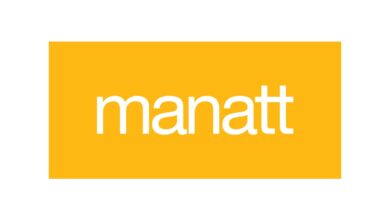One District’s Journey — THE Journal

Learning Tools
Leveraging Artificial Intelligence Platforms to Increase Student Learning: One District’s Journey
As educators, we cannot afford to delay providing instruction on appropriate use of artificial intelligence platforms to our students. Doing so places them at a significant disadvantage as they enter college and/or the workforce.
With the relatively recent evolution of, and exponentially increasing access to, generative artificial intelligence platforms, use of these in the educational setting becomes an increasingly critical consideration. How educational institutions elect to incorporate these into their existing programs can either set our students up for success in the future or serve as an anchor, limiting their potential. What follows is the journey one school district has undertaken to address this new technology in an effort to best prepare students to incorporate generative AI into the instructional program while maintaining emphasis on students’ ability to demonstrate their understanding and apply what they have learned to address and solve problems.
To begin this work, district leadership developed a framework that would seek to include a diverse group of stakeholders in the development of a district AI position statement. Outreach via the district’s website and social media, QR codes included in the district newsletter, and the more traditional option of phone contact were all employed in the hope of engaging as many diverse constituents of the community in this work as possible. The structure for development of the position statement included three evening workshops conducted between December 2023 and January 2024. Each workshop included open dialogue and brainstorming opportunities conducted as whole and small groups that enabled each participant an active role in the development of the position statement content. Three specific tasks were set for the group: create an overarching position statement with the vision for AI use in the educational program; develop a set of acceptable uses for AI platforms; and develop a set of non-acceptable uses for AI platforms. Upon completion, the final draft was publicly presented to the Board of Education and posted to the district’s website. This position statement functions as a guide for the implementation and professional development of staff for AI platforms across the district.
Building Capacity and Comfort
With the position statement in place, work began in earnest to create opportunities for the staff to begin exploring available AI platforms to increase their comfort using these in support of their daily work and the work of their students. Through informal conversations with teachers across the district, it became evident that a significant range existed in familiarity and comfort with AI platforms, with most falling into one of three groups. The first were teachers who had already invested their own time and effort using these platforms to a relatively high degree of proficiency. The second were those who had dabbled with some of these for their own personal applications. The third and largest group were those who expressed some degree of discomfort or even fear at the notion of working with such platforms and had little or no experience with generative AI.
To start the process of increasing comfort with, and understanding of, AI platforms, the district leveraged available staff development days to offer a series of 90-minute workshops. During these sessions, volunteer teachers possessing experience using AI platforms shared what they had learned and done with these with their peers who lacked such experience. The workshop structure included a portion of time at the onset to describe each platform and its functionality, followed by a majority of the session dedicated to participants exploring the platform facilitated by the presenter or presenters. Titles of the workshops offered included:
- Using Artificial Intelligence Platforms to Support Teacher Tasks in the Primary Grades
- Using Artificial Intelligence Platforms to Support Teacher Tasks in the Intermediate Grades
- Using Artificial Intelligence Platforms to Support Teacher Tasks in the Secondary Grades
- Artificial Intelligence – How to Train Your AI
- Artificial Intelligence – Supporting Impactful and Effective Student Use
- Artificial Intelligence in the World Language Classroom
- Using AI to Strengthen Analytical and Writing Skills
In addition to this internal structure for increasing staff comfort with the available platforms and how to use them as part of the educational program, teachers and administrators were actively encouraged to enroll in off-site conferences and workshops on AI and to turnkey what they learned with their colleagues during faculty and department meetings or other available professional development time.
Bringing AI Use to the Classroom
As important as building staff capacity on AI is, exploring the best methods for delivering instruction on appropriate use of these by students stood paramount in our planning. Through ongoing dialogue with students, teachers, administrators, and community members, a series of instructional goals emerged. These included: teaching students how to use AI platforms to craft meaningful prompts; how to evaluate the validity of generative AI output; how to adjust and adapt subsequent prompts to target the intended or desired information (prompt editing); and recognizing where these have value and where they do not.
Designing the appropriate structures for delivering this instruction became part of the 2024-2025 program and budget development process. The result was the addition of a required high school half-credit course entitled Digital Literacy that would embed newly established state computer science standards instruction with instruction on appropriate use of AI platforms. With few exceptions, all incoming ninth grade students will have this course included in their program. This will allow students to receive this instruction as early in their high school careers as possible and utilize these skills and knowledge to the greatest practical extent.
To build student experience with AI platforms at the middle school level, the district made modifications to an existing seventh grade course on Methods of Inquiry and Presentation to include introductory exposure to these platforms. Specific structures for instruction on use of AI platforms prior to grade 7 will be a topic of further discussion but is not part of the current plan.
Protecting Student and Staff Information
A significant consideration in the journey to identify AI platforms that can best meet the educational needs of our students is ensuring compliance with existing data privacy regulations and protecting student and staff personal identifiable information (PII). The privacy policies of each potential AI platform vendor were reviewed by district IT staff and, as warranted, the district’s legal counsel to confirm compliance with legal and ethical use standards. As part of New York State regulations, vendors wishing to work with the district to offer their product to students must sign a rider attesting to their ability to comply with all state guidelines related to protection of student data privacy. The district was able obtain rider sign-off from several such vendors so that they could be embedded within development of the new Digital Literacy course. Expansion of access to these will be ongoing as additional vendors bring new products to the market and teachers express their interest in incorporating them into their work with students.
Conclusion
As we advance through the 21st century, there is no doubt that AI software, programs, and platforms will take on a central role in society. Just about every workplace will require at least some degree of proficiency with AI. As educators, we cannot afford to delay providing instruction on appropriate use of AI systems to our students. Through careful planning and inclusion of teachers, administration, and community representatives it is possible to thoughtfully address this need and develop structures for appropriately delivering instruction that incorporates AI platforms. While field expertise on how to accomplish this task is highly limited due to the speed with which this technology has burst onto the scene, leveraging the internal expertise that exists within each school system can enable us to stay current with the exponential growth of this field and how it impacts educators work and the work of our students.



